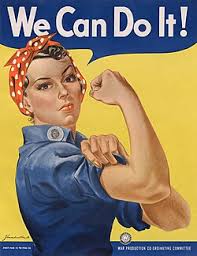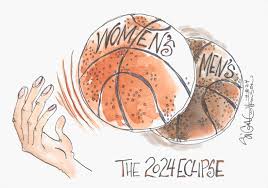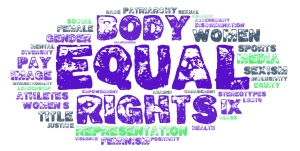1
Section One: The Fundamentals
A) What do we know about sport? What are common assumptions we make about sport and society?
Some of these statements or assumptions about sport might be untrue for some people because they may not have had access to the same opportunities or resources as others, they may have faced discrimination or prejudice because of their gender, race, class, or other factors, they may have experienced abuse or exploitation within the sport system, or they may not have had the same level of interest or enthusiasm for certain sports as others
Exercise 3: Notebook prompt
What are some other metanarratives about sport that you are familiar with? Find an image or video clip or draw something yourself that captures this idea…
So what? Why does any of this matter? Does it matter? As something we grow up with – live with – play through – we don’t often interrogate the meanings of sport, and perhaps we don’t want to.
But being aware of these assumptions and metanarratives is especially important, I would argue, because of the centrality of sport to our everyday lives, the role that sport plays in shaping our childhood and worldviews and….. [finish that thought]
|
Some other metanarratives about sport that I am familiar with are the idea of sportsmanship and fair play, the importance of teamwork, the role of sports in building character, the idea of the underdog overcoming the odds, the importance of physical fitness, and the notion of sports as a form of entertainment. It’s important to be aware of these metanarratives because they shape our perceptions and understandings of sports and its impact on our society. They can influence our attitudes and behaviors towards sports, and our views on issues related to sports.
|
B) What is social justice?
Exercise 4: Padlet Prompt
Think back to the last section and try to look at some of the ideas we discussed differently. How might sport and social justice actually co-exist?
Record any images, video clips, or gifs you added to the padlet and identify a point of intersection between sport and social justice (can be an issue or a barrier or a debate or something you would like to explore in more depth in this course) . Screenshot or paste in your response below.
| Sports and social justice intersect significantly through advocacy and activism, as athletes and sports organizations utilize their platforms to address systemic inequalities and promote equity. Prominent examples include Colin Kaepernick’s symbolic act of kneeling during the national anthem to protest police brutality, and Megan Rapinoe’s outspoken advocacy for LGBTQ+ rights and gender pay equity. Campaigns such as the NBA’s embrace of “Black Lives Matter” messaging and FIFA’s “Say No to Racism” initiative further demonstrate how sports can serve as a powerful vehicle for raising awareness and driving social change. Trailblazing figures like Jackie Robinson, who broke Major League Baseball’s color barrier, and Billie Jean King, a champion for gender equality in sports, exemplify the role of athletes in challenging societal norms and inspiring broader movements for justice.
|
C) Social Justice Reading
(note: this activity is optional!)
D) KINESIOLOGY AND SOCIAL JUSTICE
Exercise 5:
Exercise 6:
What are the implications of bodies-at-risk discourse and the refusal to understand the health gap from a social justice perspective, according to the authors of this article?
|
Perpetuation of Inequity: Framing health disparities as individual “risks” or “deficits” deflects attention from the underlying social and systemic factors that create and maintain these inequities Blaming the Victim: The “bodies-at-risk” discourse can inadvertently place the blame for poor health on individuals, suggesting that their health outcomes are solely a result of their own behaviors or choices Limited and Ineffective Interventions: Focusing solely on individual risk factors can lead to interventions that are narrowly focused on changing individual behaviors, such as promoting healthy eating and physical activity Reinforcement of Social Inequalities: By failing to address the social determinants of health, the “bodies-at-risk” discourse can inadvertently reinforce existing social inequalities
|
Section Two: Sport Feminism
Exercise 7: Notebook Prompt
What is feminism? What does it mean to you? Choose one of the images below and explain how it captures your understanding of feminism (or find one that does speak to you and paste this into your pressbook with an explanation of why it matters to you.

It’s the advocacy for women’s rights on the basis of the equality of the sexes. The belief that men and women should have equal rights and opportunities. It means to me that everyone should be treated equally and have equal opportunities regardless of their gender.
|
Exercise 8: Notes Prompt (optional)
NB: Cornell notes is a great resource that teaches effective notetaking. Unfortunately, our system can’t save notes taken in the H5P app, so this is fully optional.
Exercise 9: Crossword Activity
Exercise 10: Padlet Prompt
|
|

| Yes, the landscape of women’s sport is changing and people do care about women’s sport. The success and passion of athletes like Angel Reese and Caitlin Clark have captured public attention and admiration, and more women’s sports are being televised, covered in mainstream media, and receiving increased attendance and participation. However, challenges and inequalities within women’s sports still exist, but progress is being made towards achieving greater gender equity in sports. |





Feedback/Errata